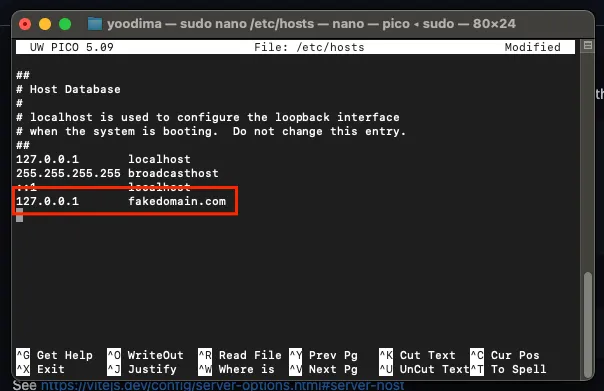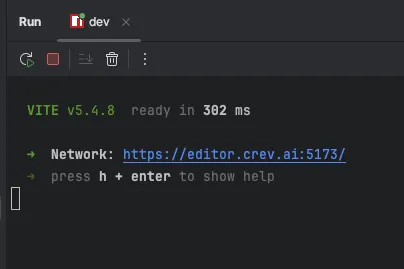Overview
Sometimes you need to fake domain on your local dev server. There are various of reasons to do it.
One of them is the situation when your deployed backend can receive requests only from specific domain.
But you need to test your frontend before deploying. Instead of changing security rules on your backend, you can fake local domain to production one.
Let’s see how to do it.
Solution for Vite
- In the
vite.config.tsfile, add the following code:
export default defineConfig({
plugins: [react()],
resolve: {
alias: {
"@": path.resolve(__dirname, "./src"),
},
},
server: {
host: "fakedomain.com", // <---- here is your domain
},
});
But if you try to run the dev server now, it will not work. You need to edit your hosts file.
- Add into your
hostsfile127.0.0.1 fakedomain.com.
If you are a Mac user, you can find it in/etc/hosts.
Of course, instead of fakedomain.com, you need to add your domain which you want to fake.
- That’s it, now if you try to run server with
npm run dev, it will work.
Sometimes you need to fake domain on your local dev server. There are various of reasons to do it.
One of them is the situation when your deployed backend can receive requests only from specific domain.
But you need to test your frontend before deploying. Instead of changing security rules on your backend, you can fake local domain to production one.
Let’s see how to do it.
Bonus level
You can also use mkcert from vite-plugin-mkcert plugin to fake https connection.
- Install dependency:
npm install -D vite-plugin-mkcert
- Add dependency to your
vite.config.ts:
import path from "path";
import { defineConfig } from "vite";
import react from "@vitejs/plugin-react-swc";
import mkcert from "vite-plugin-mkcert";
// https://vitejs.dev/config/
export default defineConfig({
plugins: [react(), mkcert()], // <---- add the plugin
resolve: {
alias: {
"@": path.resolve(__dirname, "./src"),
},
},
server: {
host: "editor.crev.ai",
},
});
- That’s it, now if you try to run server with
npm run dev, it will run the server withhttps.